What can be learned about the meaning of the Lord’s Supper by listening to worshipers?
Conversations with members of St. Luke revealed that they are aware of and participate in the shaping of their faith through their sharing in the Lord’s Supper. They bring to and take away from the communion table a variety of interpretations of aspects of the sacrament and suggests opportunities of enriching the practice of the sacrament at St. Luke.
Despite differences among the interviewees in denominational upbringing, gender, age, and the service of worship attended, common themes emerged from the interviews, falling into four groups. They are: The Meaning of Actions, The Participation of Children, Dual Meanings of the Body of Christ, and Kneeling. The different understandings of the sacrament do not change the sacrament itself, but they do give insight as to how some parts of the sacrament are perceived by the congregation. Knowing those perceptions offers worship leaders guidance on how to increase the congregation’s understanding of and appreciation for the Eucharist.
The Meaning of Actions: What do Symbolic Actions Mean for St. Luke Worshipers?
St. Luke worshipers universally imbue the Eucharist with theological meaning derived from both Christian tradition and personal insight. Késare grew up in a congregation that practiced weekly sharing in the Lord’s Supper. He saw this as shaping his faith. In sharing the sacrament, the shaping nature of Christ’s sacrifice became actualized in Késare’s life: “When [the Last Supper] happened, that was really Jesus sharing the supper with his disciples, it was before his sacrifice, and he was telling people that you cannot take this lightly.” He explained that the purpose of the Lord’s Supper was “sanctification…I’m supposed to be a witness, right? …The supper is the most important ritual in the church.”[1]
For Richard, part of experiencing grace in the sacrament was a difference between receiving and taking: “The placing of the elements in another person’s hand. That transmitting, transference. It reminds me of the way you hand something to a child. The child is hungry, and can’t reach the top of the counter, and you hand her the apple and say, ‘here you go sweetheart.’ Someone who cannot attain it themselves is being given.”[2] For Richard, grace is not something you take, but something you can only receive.
Biblical and theological teachings support the idea that to be formed religiously, it is not enough to simply remember, we must also act accordingly, as Késare stressed. Yet Jesus instructs his followers what do as well as what to think. The context of the Lukan “do this” is a constant interplay between actions and instructions, sharing bread and making peace between squabbling disciples (Lk 22.24), affirmation (22.33) and denial (22.47).
Right belief can and does shape right action in a continued dialectic; orthopraxy is shaped by orthodoxy and vice-versa. Arun Jones explains that, in the Lord’s Supper, “a prescribed mental activity (recalling the event) is supposed to create orthopraxy…[There] is a back-and-forth between orthodoxy and orthopraxy.”[3] The practice of the sacrament of Holy Communion at St. Luke indicates that there is a lively connection between what parishioners are doing and what they are thinking about what they are doing as they share the Eucharist.
The Participation of Children: How Does the Inclusion of Children at the Eucharist Affect St. Luke’s Theology and Practice of the Eucharist?
At St. Luke, all who profess a faith in or love for Christ are invited to share in the Sacrament; worshipers do not have to be members of the church to receive the sacrament. Furthermore, the congregation broadly interprets Jesus instruction to “Allow the children to come…because the kingdom of heaven belongs to people like these children” (Mt 19.14) as applying to the Lord’s Supper as well as to being included in worship or teaching. In this way, St. Luke stands in accord with the practice advocated in The United Methodist Book of Worship, welcoming “all who intend to lead a Christian life, together with their children…to receive the bread and cup. We have no tradition of refusing any who present themselves desiring to receive.”[4]
Dwight Vogel says, “Holy Communion is a sacred meal in which the community of faith, in the simple act of eating bread and drinking wine, proclaims and participates in all that God has done, is doing, and will continue to do for us in Christ. In celebrating the Eucharist, we remember the grace given to us in our baptism and partake of the spiritual food necessary for sustaining and fulfilling the promises of salvation… Holy Communion may be an occasion for the reception of converting,
justifying, and sanctifying grace.”[5] The purpose of Holy Communion for the baptized Christian is to strengthen or confirm the faith proclaimed in baptism. Since those who are not baptized are also invited to share in the holy meal, it serves as a means of prevenient grace, working within them to go before (prevenir) their profession of faith in Christ.
But St. Luke members come from a variety of Christian traditions. Some of the denominations in which St. Luke worshipers grew up delay participation in the Lord’s Supper until a person has been baptized or received Christ by profession of faith. The responses of the interviewees therefore incorporate a spectrum of opinions on the inclusion of children; there is support for both the inclusion and denial of children’s participation in the Lord’s Supper. The memories recalled by interviewees show how the inclusion of children may be comical and irreverent as well as spiritual and profound.
Sisters Olivia (age twelve) and Patricia (age eight) embody a positive aspect of the sacrament being open to persons of all ages and understandings. Both are aware of the congregation witnessing their actions as they come forward to receive communion. Patricia recalled, “I didn’t want to [take communion at first] because I was nervous about going up there, but then I started (to participate in communion) like when I was six, and I learned that it was really yummy.”[6] Her sister added, “I do have to say that getting myself in front of people and doing it, it’s hard…I like to think that they are seeing me at a young age do it. And I mean, understanding it, hopefully, is what they see me doing? Because I try and pray and everything.”[7]
At the other end of the spectrum are examples that support the idea that children should be prepared and educated before participating in the sacrament. Mark’s recollection offered support for traditions which are more restrictive of children’s participation. He remembered thinking, “Yes! It’s communion Sunday! I’m gonna get to have grape juice and a little snack! When I’d see the bread plates up front, in front of the bullpen, the bull-pit…wait, the pulpit. Whatever…I’d be like yes, little snack, little grape juice—I love grape juice—and less time for me to try not to fall asleep… They didn’t have actual bread they’d give to us, they gave us oyster crackers. And I would think, these are oyster crackers, for all intents and purposes!”[8]
Adults recalling their participation as children in the Eucharist do so with the weight of the teaching of the church on their lives. One young parent, interviewed with his Sunday School class, had a vivid recollection of receiving the wafer as a child, taking it into his mouth, and breaking it against his palate with his tongue. He said that as he did that, the words of Jesus came into his mind. He recalled these words as being “this is my body, broken for you.”[9] He imparted an adult’s sensibility to his childish memory.
Children, however, collapse the distinction between traditional and personal understandings; lacking the perspective of years, for them, the sacrament is entirely personal. That monovalent apprehension exacerbates the concrete aspects of the sacrament and elevates “certain traditional understandings—e.g., [that] the feast is joyful—that has been lost among adults.”[10]
There is no biblical record of Jesus excluding children from shared meals, though neither are they explicitly included. John’s gospel identifies a “youth” as the source of the bread and fish that were multiplied to feed the five thousand (6.8-10), and Matthew notes that the count did not include “women and children” (14.21). The Passover tradition of the youngest child asking the leading question “Why is this night different from all other nights?” indicates the presence of children is essential for the transmission of ritual. Inclusion of children may be inferred from the scriptural record, but there is no mandate for inclusion.
The reflections made by Olivia and Patricia might seem to support an unqualified inclusion, but both the children who were interviewed and adults who recalled receiving communion as children worshiped in the presence of their parents, who were active participants in weekly worship, Sunday School, and other activities. All of the recollections seem to point to the sacrament as forming a potent symbol in the memories of these interviewees. At the same time, the interviewees are all people who are active in worship, so might be considered likelier to have a positive connection. Nevertheless, the majority of conversations support the present practice of St. Luke of including children in the presence of their parents or guardians in the sacrament, whether or not the children have been baptized.
Dual Meanings of “the Body of Christ”
The “Body of Christ” has two meanings within the church, and those meanings are inextricably bound together. On the one hand, the Body of Christ is associated with Jesus’s identification of the bread he shared with his disciples as his body (Mt 26.26, Mk 14.22, Lk 22.19, cf. Jn 6.51). On the other hand, Paul uses the phrase to refer to the church, Christ’s body in the world (Rom 12.5, I Cor 12.12, cf. Eph 4.15-16). Similarly, the celebration of the sacrament of the Lord’s Supper occurs only within the church, and the church does not exist without the celebration of the sacrament.
The way Christians define the Body of Christ varies across traditions and denominations. Richard was not raised in a faith tradition, but he often accompanied his childhood friend to his family’s Roman Catholic mass. “I remember observing how reverently the elements were treated. And I asked about that, and it was explained to me that the reason was, that during the Mass, this is not just a piece of bread and a cup of wine, this actually becomes the body and blood of Christ…And so I was intrigued to that and drawn to the idea that this is something extraordinary…something that transcends human understanding. Yet I was forbidden to participate, so I had very mixed emotions. I was intrigued by the reverence it was treated with but taken aback by my being barred from participating in it. That was my first real introduction to Christianity—what I thought Christianity was about. It was this very exclusive club.”[11]
Expanding the invitation to share in the Eucharistic Body of Christ (the bread) may help some worshipers feel more included in the corporate Body of Christ. For years, holiness and exclusivity continued to be wed in Richard’s mind: “I was first struck by this reverence with which [the sacrament] was treated. The awe, to watch the head of that particular denomination go on his knees before this, told me that there was something special going on here. But why was I barred from participation?…If it’s all that special, why don’t I get to be a part?” It was not until many years later, when he worshipped at a United Methodist Church, that the tension was resolved for him: “Here was the ceremony and here was the liturgy and here was the reverence—without the exclusion…That communion could be this awe-inspiring, reverent understanding for us but yet is available for everyone. And that was why I became a Methodist! There I found what I wanted: the ceremony and the reverence and the liturgy and the awe—but the welcoming to all. It was like this perfect synthesis between the high Roman mass and the you know, kind of hang out together thing.”[12]
Being a part of the body of Christ in worship and through the Sacrament is also a witness or encouragement to fellow worshipers. Edward, a lifelong Methodist, said, “Something that really means a lot to me about communion is when you have these people who come down who barely can walk. They barely can get down there, and when they get down there, they’re going to kneel down, if there’s any way that they can, even though they barely can get back up. That’s touching to me.”[13]
Interviews revealed that although worshipers had a strong identification with the broken bread as the Body of Christ, they have less of an understanding of the shared Eucharist as forming the worshipping community. Arun Jones commented, “the power of the Eucharistic meal has been to keep Christians bound together as the body of Christ,” even when they may not acknowledge that power.[14]
What Does Kneeling for the Eucharist mean for Worshipers at St. Luke?
When worshipers are invited to share in the Lord’s Supper in the St. Luke sanctuary, they are invited to come forward at the indication of the ushers and kneel or stand in prayer at the chancel rail for as long as they like. When they are ready to receive the bread, they make a cup with their hands and the bread will be put into their cupped hands. They may then take one of the little cups of juice from the rack in front of them. The association with kneeling at the services in the sanctuary is so strong that some worshipers who have physical limitations would rather be served in their pews than to come forward and have to stand and kneeling cushions had to be added to the hall where the contemporary service is celebrated, even though the Eucharist is shared by intinction.
When asked to name the most significant part of the celebration of the Lord’s Supper, Edward responded quickly, “Kneeling at the altar.”[15] He had already indicated that kneeling implied submission, so when asked to elaborate, he said, “You know, I don’t kneel down too often when I pray, and I don’t think a lot of us do, and that’s one of the few times I think when we do. So that’s why I say that. I may be wrong, but I’d be willing to bet money on it.”[16]
Kneeling represents a conscious choice for Olivia and Patricia, who giggled when they learned that, in some congregations, the elements were passed in the pews. They found the idea of not coming forward to receive patently ridiculous; sitting implied passivity to them. To come forward implies an effort of the will: “You have to make the decision to do it.”[17] The strong positive association with kneeling is so important that portable kneelers were built for use in the multi-purpose room so that the experience of those sharing in communion would not lack that aspect of worship.
Taylor Burton-Edwards blogged on the topic “Why do we kneel for Holy Communion?” as his alter-ego “Liturgy Man.” He wryly notes that “the people called Methodist have not been of one mind on the issue of kneeling. Wesley didn’t seem to think it mattered, and the current ritual doesn’t mention it.”[18]
It might be argued that the petitioners did not understand themselves as praying. However, since the gospels present Jesus as God’s Son, a petition directed to the person of Jesus is effectively a prayer. While kneeling is nowhere dictated as a requisite for faith or practice, the action has a strong positive association for St. Luke worshipers.
Conclusion
Positive Assessments
The practice of the Eucharist has a dynamic relationship with the environment in which it exists. Asking the congregation questions about the meaning of the sacrament revealed the enlivening relationship that the congregation’s participation in the Lord’s Supper has on them intellectually and theologically. My initial belief that the actions or physical comportment of the worshipers were especially significant proved to be unfounded. Some worshipers had strong feelings about kneeling or having the bread placed in their hands, but for most of the interviewees, the experience of corporate worship overshadowed their individual actions.
Diverse theologies are represented among the interviewees. Despite the different denominational roots, they share a high Christology and a common belief in human sinfulness. The interviewees reflect deeply on their involvement with the sacrament, its meaning and its purpose in and for their lives.
The process of asking the congregation questions about the Lord’s Supper seemed to empower them to engage pastoral leadership, pushing back on aspects of the sacrament that they had learned about. For example, when a guest preacher spoke about the reciprocal forgiveness that is offered before the Great Thanksgiving, one group pointed out that phrase was not always included in the practice of St. Luke. Immediately following that conversation and at every service in the year thereafter, that oversight has been corrected.
What is Missing?
Pastors and worship leaders at St. Luke are missing an opportunity to use the sacrament of Holy Communion as a faith-shaping tool. We already preach appropriate sermons and craft appropriate liturgies, but we have not matched that with appropriate education and conversation to build on and enrich the experience of the congregation. Especially, we are not involving children with their families in learning about the meaning of the Lord’s Supper. The conversations indicate that worshipers have strong memories of receiving the sacrament as children. Evaluating the participation of children with their families in worship can ensure that we are providing children and their families opportunities to explore and learn about the sacrament.
Twelve-year-old Olivia gives one example of the kind of thought some children are giving to the sacrament. She regards partaking of Holy Communion as essential to being a follower of Jesus: “Just because if you’re a Christian, you have to be renewed. And that’s pretty much what communion is to me, is being renewed for your sins. And forgiven. You still do bad things, you just don’t think about it because you are little… It’s what Christians do.”[19] What Olivia regards as being expected of Christians speaks to the function of the church and the function of the sacrament, they form one another, an example of the dual understandings of the Body of Christ.
The congregation is more thoughtful about the meaning of the sacrament than we pastors may give them credit for being. At the same time, what they are thinking about does not necessarily accord with Church or biblical tradition. This lively discontinuity indicates the continued need for education of and conversation with members of the congregation.
A major omission in the expressed theologies of Eucharist at St. Luke is any eschatological vision. All of the interviewees connected the Eucharist with Jesus’ Last Supper, often conflating “Last Supper” with “Lord’s Supper.” Not one spoke of it in terms of a foretaste of a heavenly banquet, what Geoffrey Wainwright speaks of as the eschatological dimension of Christ’s teaching about eating and drinking.[20]
What Next?
Members of St. Luke expressed the belief that the Eucharist connects them to one another and to God; they understand how sharing the Body of Christ in the Eucharist shapes them as the Body of Christ as a congregation. Don Saliers explains the dual function of the Eucharist and the congregation as the Body of Christ this way: “…[The] Sunday Eucharist was literally a re-membering: that is, a putting together of the body of believers who were to be Christ for the world.”[21] We are sacramentally connected with other members of the body of Christ, both within the Church Militant (the church on earth) and the Church Triumphant (the church in heaven).
At the same time, we do not as a congregation regularly proclaim this truth at either the Eucharist or at funerals. Teaching and preaching on the eschatological aspect of Holy Communion and including Holy Communion in funerals would begin to remedy this lack in our congregational theology.
Lawrence Hull Stookey says that while we are clearly instructed to “do this” by both Jesus and Paul,[22] we are not told how to think.[23] However, as demonstrated by the conversations with St. Luke members, they are thinking about what they are doing in the Eucharist, thus fulfilling Paul’s instruction to “remember all my instructions, and…hold on to the traditions exactly as I handed them on to you” (I Cor 11.2 ff). They are reflecting and remembering in creative and sometimes unorthodox ways.
Pastors and educators at St. Luke can build on this established pattern of inquisitive reflection by offering opportunities for worshipers to talk with one another and with pastors. Not only would it help answer questions and correct confusion, it would provide opportunities for pastors to learn generative and symbolic language that already has meaning for members of the congregation, as in Késare’s love for the Eucharist as being the most important part of worship.
These interviews indicated that the worshiping congregations at St. Luke love participating in the Lord’s Supper, reflect on it both during and after the celebration, and enjoy learning more about the history and purpose of the sacrament. Teaching the significance of the sacrament is not only doing (orthopraxy) or talking (orthodoxy), it is talking about the doing.[24]
The individual witness of worshipers has a reflexive effect on the larger body in the same way that worshipping with the body affects individuals. As Edward and the woman in the group discussion[25] indicated, these individuals may not be aware of their influence on the larger body. Their struggle to worship in the way they always have signals belief that participating in the Eucharist is vitally important, and if important to them, important to all of us. Learning more about the reflexive connection between the individual experience of the Eucharist and the corporate practice will enrich the future worship life of St. Luke.
What can be learned about the meaning of the Lord’s Supper by listening to worshipers? Jesus models asking his followers questions.[26] Asking questions and listening to the worshipers’ answers offers insights to pastors for future preaching and teaching and demonstrates a respect for the experiences and insights of worshipers. For this writer, the responses of the interviewees provide an encouraging vision of a thoughtful, reflective, and engaged Body of Christ who look forward to participating in the celebration of the Lord’s Supper. Their responses give me great hope for the future of the Church.
[1]. Individual interview #12, September 15, 2017. Késare is of Puerto Rican descent. His English, while fluent, is not “standard.” In this and all transcriptions, most grammatical and syntactical errors are corrected. They are otherwise accurate transcriptions of what the speakers said.
[2]. Group interview #3, September 19, 2017.
[3]. Arun Jones, e-mail message to author, December 20, 2017.
[4]. United Methodist Church, The United Methodist Book of Worship (Nashville: Abingdon Press, 1992), 29.
[5]. Dwight Vogel, By Water and the Spirit: A Study of Baptism for United Methodists (Nashville: Cokesbury, 1993), 13.
[6]. Individual interview #15, October 26, 2017.
[7]. Individual interview #15, October 26, 2017. Their self-aware reflection surprised me. I had thought Charles Dickens was using imaginative license inferring that young children were aware of their inspirational effect on others when he allowed Bob Cratchit to say of his son, Tiny Tim, “He told me, coming home, that he hoped the people saw him in the church, because he was a cripple, and it might be pleasant to them to remember upon Christmas Day, who made lame beggars walk and blind men see.” Charles Dickens, A Christmas Carol (New York: William Morrow and Company, 1996), 30.
[8]. Individual interview #13, September 20, 2017.
[9]. Group interview #2, September 17, 2017. Mt 26.26 and Mk 14.22 both say “this is my body.” Lk 22.19 says “given for you.”
[10]. Arun Jones, e-mail message to author, December 20, 2017.
[11]. Group interview #3, September 19, 2017.
[12]. Group interview #3, September 19, 2017.
[13]. Individual interview #5, September 6, 2017.
[14]. Arun Jones, e-mail message to author, December 20, 2017.
[15]. The use of the word “altar” to describe the chancel rail reinforces the idea that the bread and juice shared there are the physical shed blood and broken body of Jesus. The Roman Catholic style of architecture in the sanctuary and chapel gives the visual focus to the communion table, not the pulpit. As those structures were the only locations for worship at St. Luke until the Ministry Center was built in 2004, the architecture of those buildings may have reinforced a more Catholic interpretation of the Eucharist. Worshipers’ high Christology may, in turn, affect their opinions about what is appropriate for the physical structure or appearance of the sanctuary or worship center.[16]. Individual interview #5, September 6, 2017.
[17]. Olivia, Individual interview #15, October 26, 2017.
[18]. Taylor Burton-Edwards, “Liturgy Man: Do We Need to Kneel to Receive Holy Communion?,” November 1, 2017, accessed November 11, 2017. https://blog.umcdiscipleship.org/liturgy-man-do-we-need-to-kneel-to-receive-holy-communion/.
[19]. Individual interview #15, October 26, 2017.
[20]. Geoffrey Wainwright, Eucharist and Eschatology (New York: Oxford University Press, 1981), 26-27. Wainwright’s examples of the future feast include the inclusion of the Gentiles (Mt 8.11 and Lk 13.29), the Beatitudes’ promise of future filling for the righteous (Lk 6.21a and Mt 5.6), and the reward to faithful servants upon the return of the master (Lk 12.37b).
[21]. Don E. Saliers, Worship and Spirituality, 2nd ed. Spirituality and the Christian Life Series (Akron, Ohio: OSL Publications, 1996), 64.
[22]. “Do this,” in both Lk 22.19 and I Cor 11.24.
[23]. Laurence Hull Stookey, Eucharist: Christ’s Feast with the Church, (Nashville: Abingdon Press, 1993), 29, 31-32.
[24]. Group interview #5, November 5, 2017. One of the interviewees, an obstetrician-gynecologist, says that she was taught surgery in the “watch one, do one, teach one” method. Surgeons take muscle memory seriously.
[25]. Group interview #1, September 7, 2017.
[26]. “Who do people say that I am?” (Mk 8.27) and “What do you want me to do for you?” (Mk 10.51) are only two examples.Copyright © 2018 by Cynthia Cox Garrard
All rights reserved
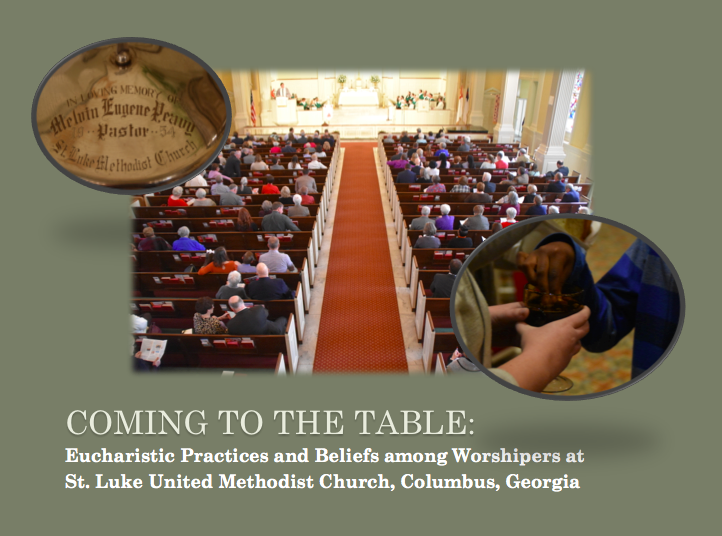
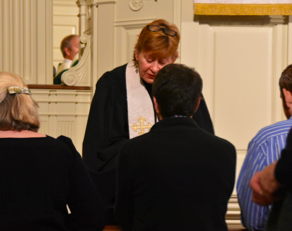
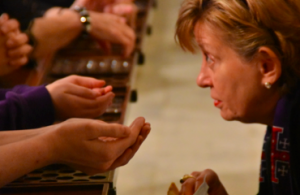
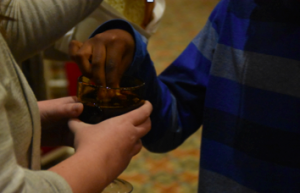


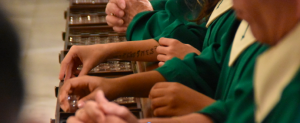

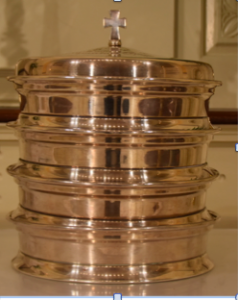
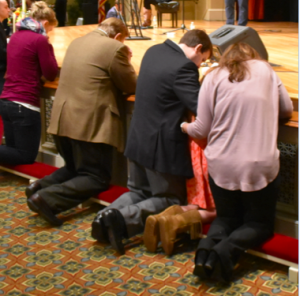
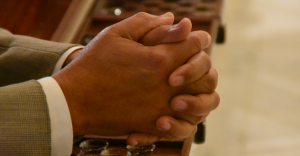
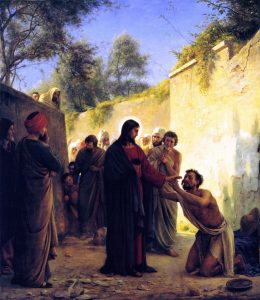
Your post is awesome this will be definitely help us, thanks